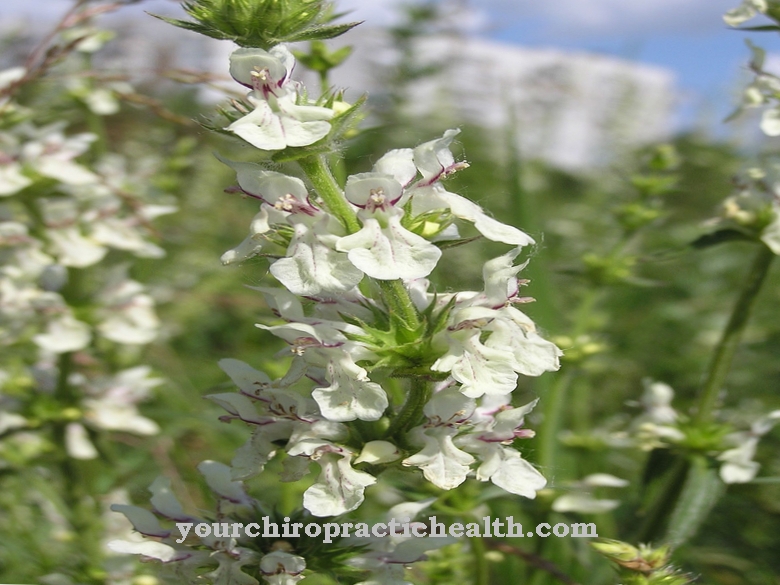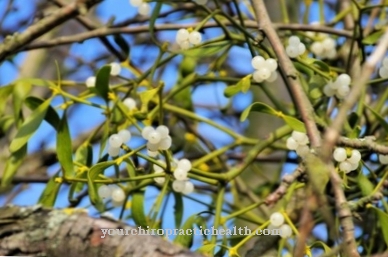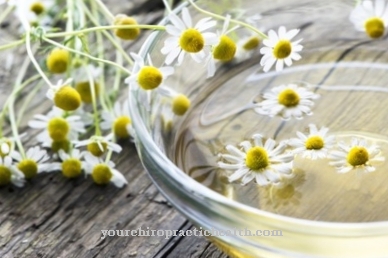Occurrence & cultivation of amaranth

The spike-like inflorescences are cream-colored, yellow or purple-red; the flowers unisexual. Amaranth flowers between June and October. The encapsulated fruits contain a large number of about 1 mm large seeds that are white, black, reddish or yellow in color, taste nutty and can be harvested in late autumn. Around 50,000 seeds develop per plant.
Amaranth is native to Latin America, but occurs worldwide, with the exception of arctic regions. The plant is undemanding, needs little water, but needs the sun. It grows wild on wasteland and steppe areas and is also cultivated as a crop. Species planted in Europe prefer nutrient-rich soils. Here, however, amaranth forms also often appear as weeds accompanying maize and vegetable cultivation.
Effect & application
Amaranth fruits contain a very high proportion of proteins and essential amino acids, including lysine. The content of minerals, iron, zinc, magnesium and calcium is also above average. In addition, there are unsaturated fatty acids such as linoleic acid, alpha-linolenic acid and omega-3 fatty acids, as well as fiber and tannins and vitamins B1 and E.
Amaranth is a pseudo-grain and therefore gluten-free. It can be used for celiac disease, a chronic disease of the small intestinal mucosa, and has also proven itself as a grain substitute for neurodermatitis and other allergies. Due to its high iron content, amaranth can generally be given when there is a lack of iron and an increased iron requirement during pregnancy and menstruation. The leaves, which can be eaten as vegetables, are very high in protein and exceed the protein content of soy.
Lysine, 15 percent in amaranth, has a harmonizing effect on the acid-base balance of the human body. Amaranth can therefore have a balancing effect on stomach and kidney problems or be given as a diet. Due to its protein content, it is a food of high biological value. Zinc is an essential trace element that is required during growth, for skin and connective tissue regeneration, for protein synthesis, for insulin storage and to strengthen the immune system. It also has an antioxidant effect.
Magnesium supports the body's own protein build-up, has a positive effect on insulin balance in diabetes, strengthens the central nervous system, and has an anti-inflammatory effect. Calcium is involved in many processes in the body. It is essential for teeth and bone formation during growth. Calcium supports blood clotting and tones the cell membranes.
Linoleic acid is involved in the ongoing regeneration processes of the skin and represents a natural light protection. Alpha-linolenic acid has a positive effect on inflammatory processes and shows reactions similar to fish oil. Omega-3 fatty acids act as antioxidants, regulate the blood fat content and protect against osteoporosis, an age-related fragility of the bones. Vitamin B promotes the absorption and conversion of omega-3 fatty acids in the human organism.
Importance for health, treatment & prevention
Due to its high nutritional value and its good tolerance, amaranth is used in a variety of ways in the food industry: The fruit is used as an ingredient in bread, muesli, pastries, pasta and confectionery, as well as in the production of baby and toddler food. Amaranth is widely represented in vegetarian and vegan cuisine because it contains many essential, life-sustaining substances.
Naturopathy uses amaranth as an infusion of the leaves and as a pulp of the grains for anemia, headaches, migraines, menstrual cramps, sleep disorders, fever, ulcers in the throat and mouth, as well as for diarrhea and hemostasis. In addition, amaranth is considered an anti-aging agent because of its composition. Due to its combination of essential substances and its good tolerance, amaranth is becoming increasingly important in Europe in the areas of nutrition and active health care. It provides necessary nutritional supplements for low-meat, vegetarian and vegan diets and is ideal for the growing season and for convalescence.
Amaranth is a good alternative to conventional grains for diets caused by food intolerance or diabetes.It also prevents allergies, which among other things arise from an unbalanced diet. Amaranth is a balanced food. It is one of the oldest useful plants in the world and can be prepared in many ways. The very protein-rich leaves are also suitable for consumption.
It has an antioxidant effect and thus serves to prevent cancer. Amaranth has a balancing effect on the central nervous system, among other things due to its magnesium and zinc content. In this way, negative stress and its consequences can be countered. The pseudo-grain combines many advantages that prevent diseases caused by civilization. Amaranth is increasingly finding its place in a healthy, varied, full-fledged diet that contains vital substances.
Amaranth can also be given in the event of illness. It is well tolerated as a diet. Above all, the substances contained in it can be easily absorbed and utilized by the human organism. In European naturopathy it plays a subordinate role. Amaranth is a food that can be consumed over a long period of time without negative side effects and which makes a lasting contribution to a healthy lifestyle.




























